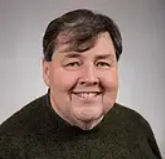WHAT IS SEASONAL AFFECTIVE DISORDER?
Seasonal affective disorder (SAD) is a form of depression that is related to seasonal changes. Symptoms associated with SAD begin and end at the same time every year.
People who have seasonal affective disorder in Portland experience symptoms that are similar to depression, but only during certain seasons. A major depressive disorder or clinical depression may last for months at a time and continues even when the subject is past their trigger season. In contrast, patients with seasonal affective disorder can expect their symptoms to disappear once the triggering season has passed.
Seasonal affective disorder is considered to be triggered by a lack of sunlight reaching the retina, which inhibits the secretion of melatonin. Once this secretion has been inhibited, it can lead to depressive symptoms such as irritability and anxiety. The symptoms are usually worse at the beginning of the triggering season and then rapidly decrease once that triggering season has ended.
An estimated three million people struggle with SAD yearly. Seasonal affective disorder is most commonly diagnosed in autumn or winter, when sunlight levels are lower and days are shorter. However, it is possible to exhibit symptoms at other times of the year as well, even if those seasons do not typically trigger depression. For example, an unexpected thunderstorm may trigger a summer depressive episode, or an unexpected snowfall may spark a spring depressive episode.


SYMPTOMS OF SAD
- Changes in your appetite
- Feelings of depression almost every day and throughout the day
- Feelings such as hopelessness, guilt, and worthlessness
- Insomnia
- No interest in participating in activities that you once found enjoyable
- Sleeping for long periods of time
- Very low energy and sluggishness
- Weight gain in the winter; weight loss in the summer
If you notice these changes in you or a loved one, reach out to the professionals at Crestview Recovery for more information about our mental health services in Portland.
SEASONAL AFFECTIVE DISORDER TREATMENT IN PORTLAND
Light therapy is one of the most widely used and effective forms of treatment for SAD. It involves being exposed to a special type of bright light known as full-spectrum fluorescent light, which helps stimulate the production of serotonin in the brain, which can help improve mood and reduce symptoms like fatigue.
At Crestview Recovery, we offer specialized seasonal affective disorder treatment that takes a holistic approach, ensuring the individual’s mental and physical well-being. Our licensed staff provides evidence-based practices and therapies to help individuals cope with SAD symptoms in a safe and effective way.

HOW CAN A MENTAL HEALTH TREATMENT CENTER IN PORTLAND HELP SOMEONE WITH SAD?
- Cognitive-behavioral therapy
- Dialectical behavior therapy
- 12-step-informed group therapy
Licensed health practitioners can provide mental health treatment for people with SAD. This can include light therapy, also known as phototherapy, specific medications, and psychotherapy.

AVOID COMPLICATIONS OF SAD BY VISITING A MENTAL HEALTH TREATMENT CENTER
- Alcohol or drug abuse
- Becoming socially withdrawn
- Having problems at school or work
- Suicidal behavior
Help is available for your seasonal mood swings and depression. Reach out before your symptoms escalate.
WHAT ARE THE RISK FACTORS FOR SAD?
- Already diagnosed with clinical depression or bipolar disorder. The transitioning seasons can impact a person’s mood drastically, making them slump far into depression.
- Family history. People diagnosed with SAD are often related to someone with this or another form of depression.
- Living in areas far from the equator. It is not uncommon for people who live either very far north or very far south of the equator to experience SAD. Many believe this is because there is less sunlight in the winter months and longer days in the summer.






















